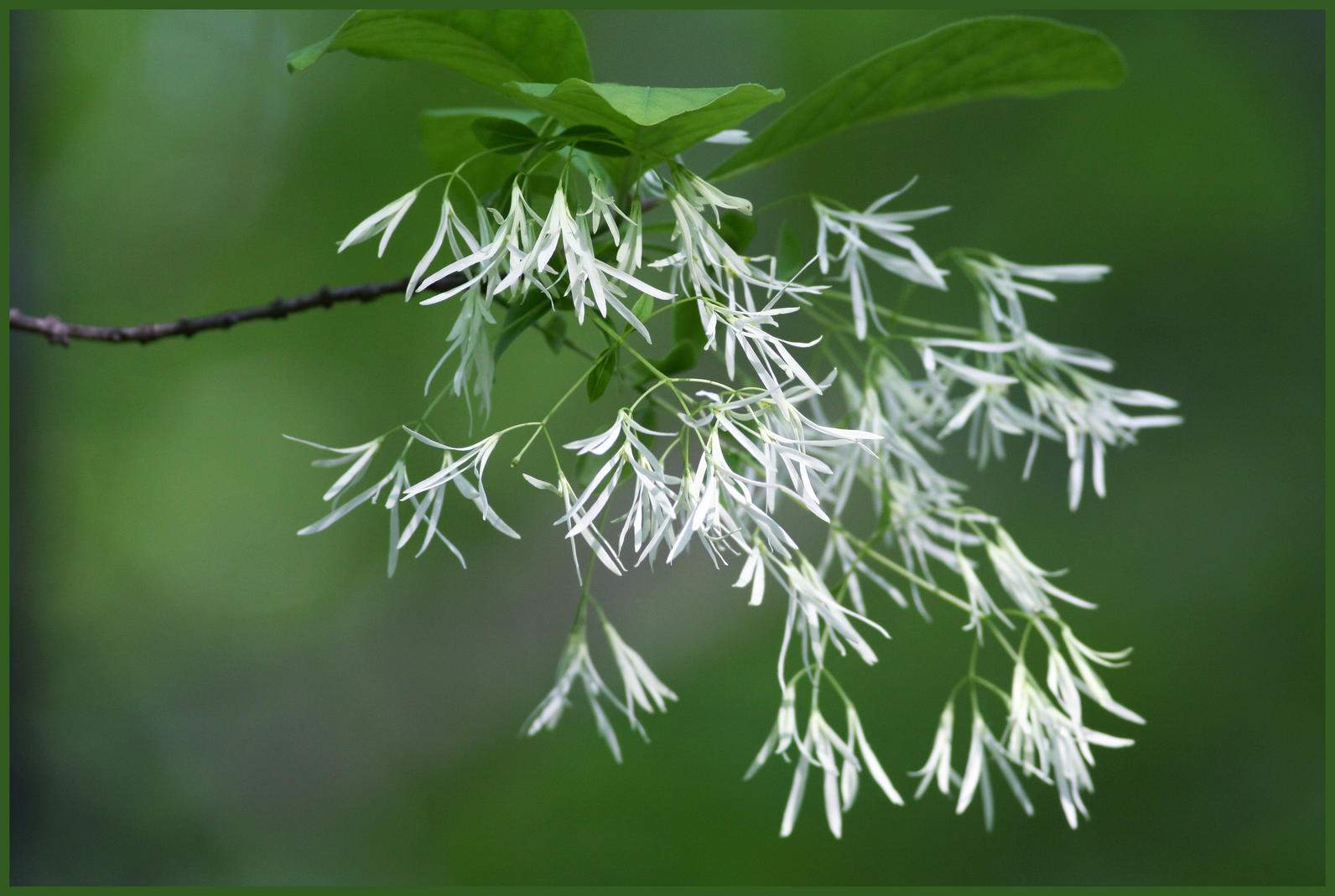Please welcome Audubon North Carolina’s Bird-Friendly Communities Coordinator Kim Brand. Launched in 2013, Audubon North Carolina’s Bird-Friendly Communities initiative is a partnership program involving more than 20 organizations with a vision for creating a more bird-friendly North Carolina. This vision statement guides the goals and projects of the group: “Bird-friendly communities give birds the opportunity to succeed by providing connected habitat dominated by native plants, minimizing threats posed by the built environment, and engaging people of all ages and backgrounds in stewardship of nature.”
Fringe Tree, also known as Old Man’s Beard, is best loved for its showy, sweet-smelling clusters of white fringed flowers in April and May.
But it’s really a spectacular small tree or large shrub for three seasons.
First, spring, for the aforementioned, eye-catching flowers.
Second, summer, Fringe Tree’s bird-friendliest season. The bluish-black fruits will attract a variety of birds – American Robins, Eastern Bluebirds, Wood Thrushes, Northern Mockingbirds, Gray Catbirds, Brown Thrashers, Summer and Scarlet Tanagers, and Blue-headed Vireos – from June through September. Fringe tree is dioecious, meaning each plant has either male or female parts, and female plants will produce more fruit if a male plant is nearby.
Finally, in the fall, Fringe Tree’s leaves turn a lovely “pure yellow,” in the words of Dr. Larry Mellichamp, author of Native Plants of the Southeast, adding bright, sunny interest wherever Fringe Tree grows.

How To Grow Fringe Trees
Fringe Tree, Chionanthus virginicus, is native to the Mountains, Piedmont and Coastal Plain of North Carolina.
Fringe Tree will grow as a lovely small tree, growing 10 to 30 feet tall at maturity with a canopy width of 10 to 20 feet. It often has multiple trunks and also makes a pretty shrub if you leave the trunks. It is sensitive to soil compaction but is relatively tolerant of drought conditions.
Choose a spot with part to full sun and moist to dry soil.
Fringe Tree is a host plant for caterpillars of several native sphinx moths. Plant one, and you might get a close-up look at the beautiful Laurel Sphinx caterpillar – if the birds don’t beat you to it!
Fringe Tree is one of our 2016 Bird-Friendly Native Plants of the Year. Check out our Growing Guide for more details on this and more bird-friendly plants for North Carolina.




